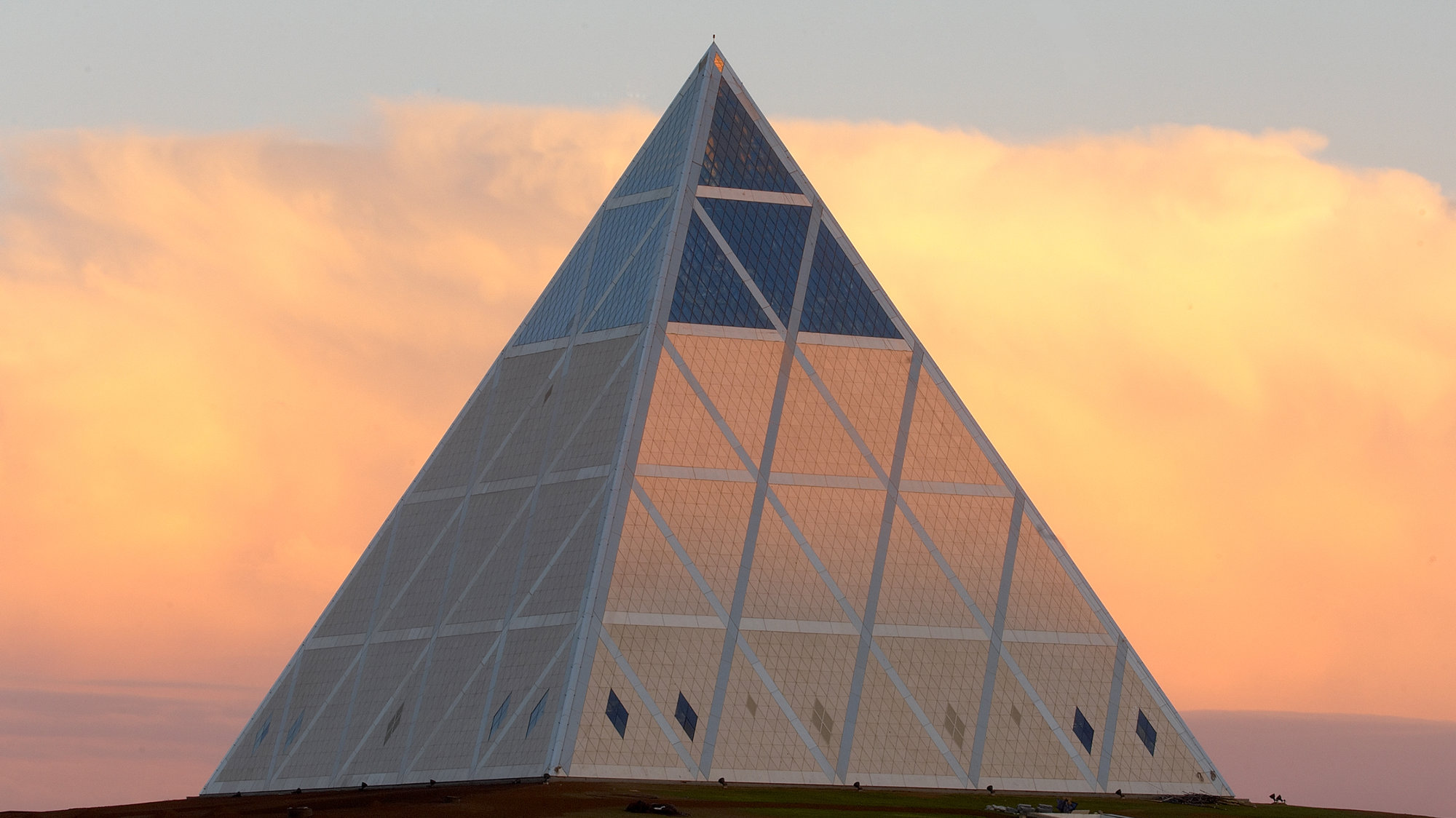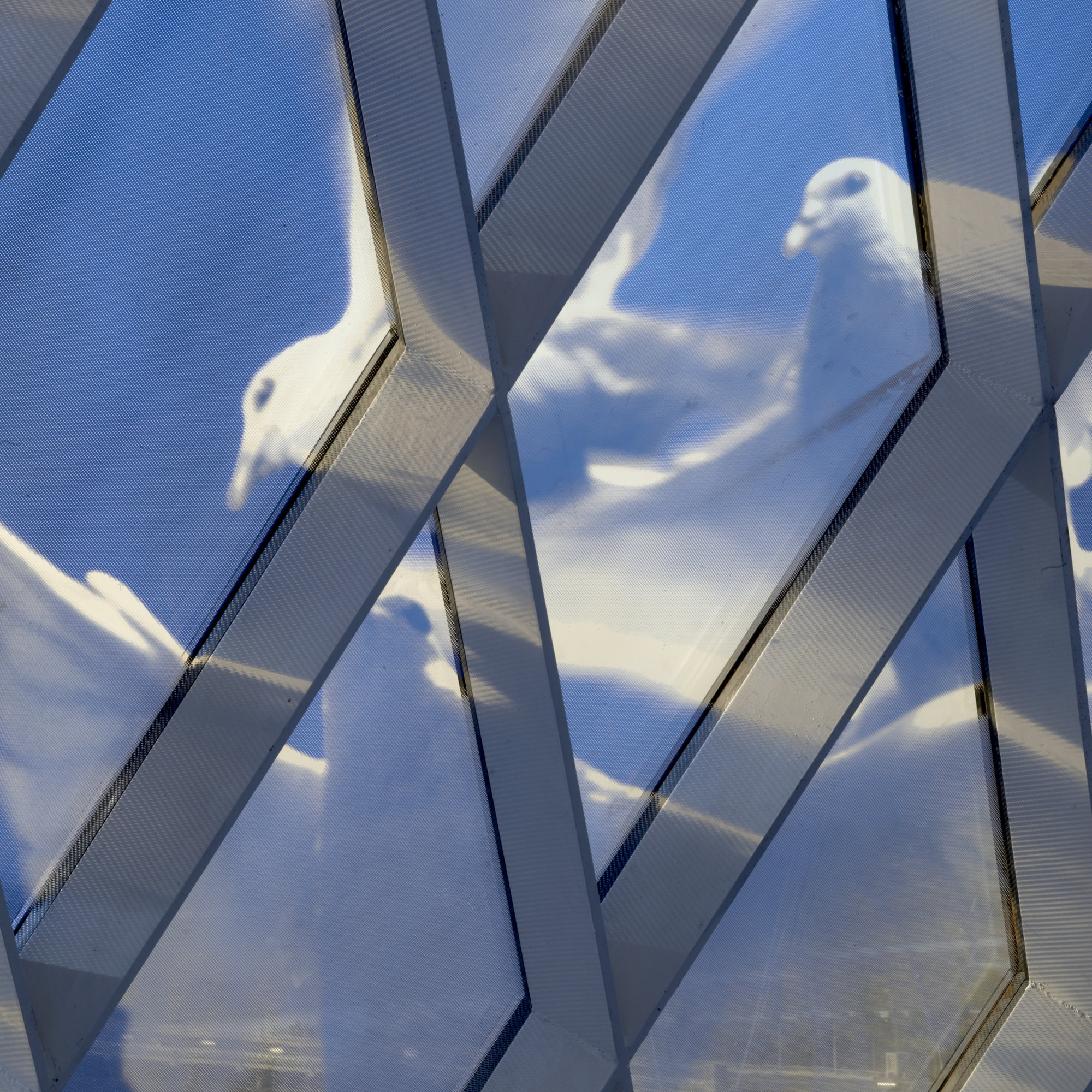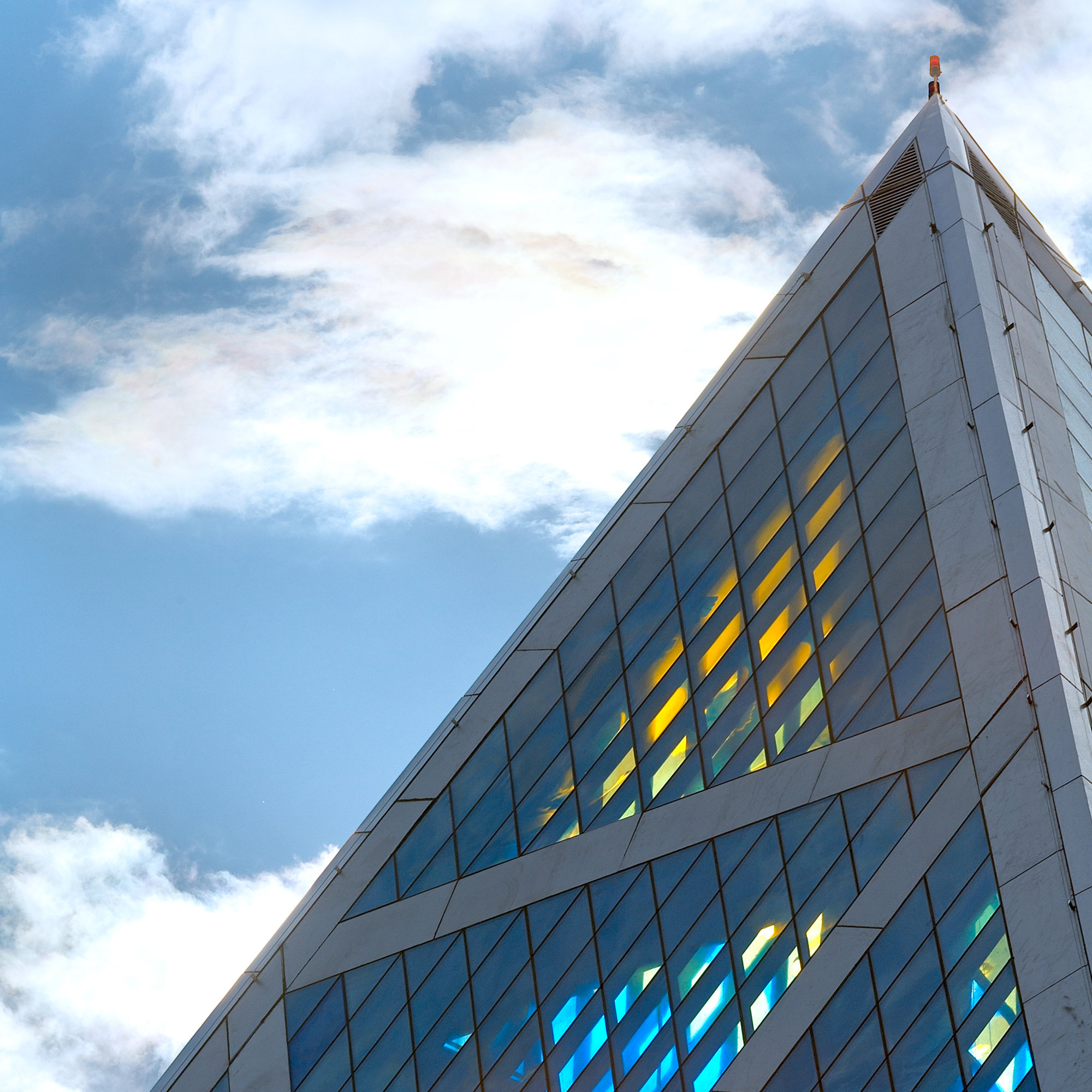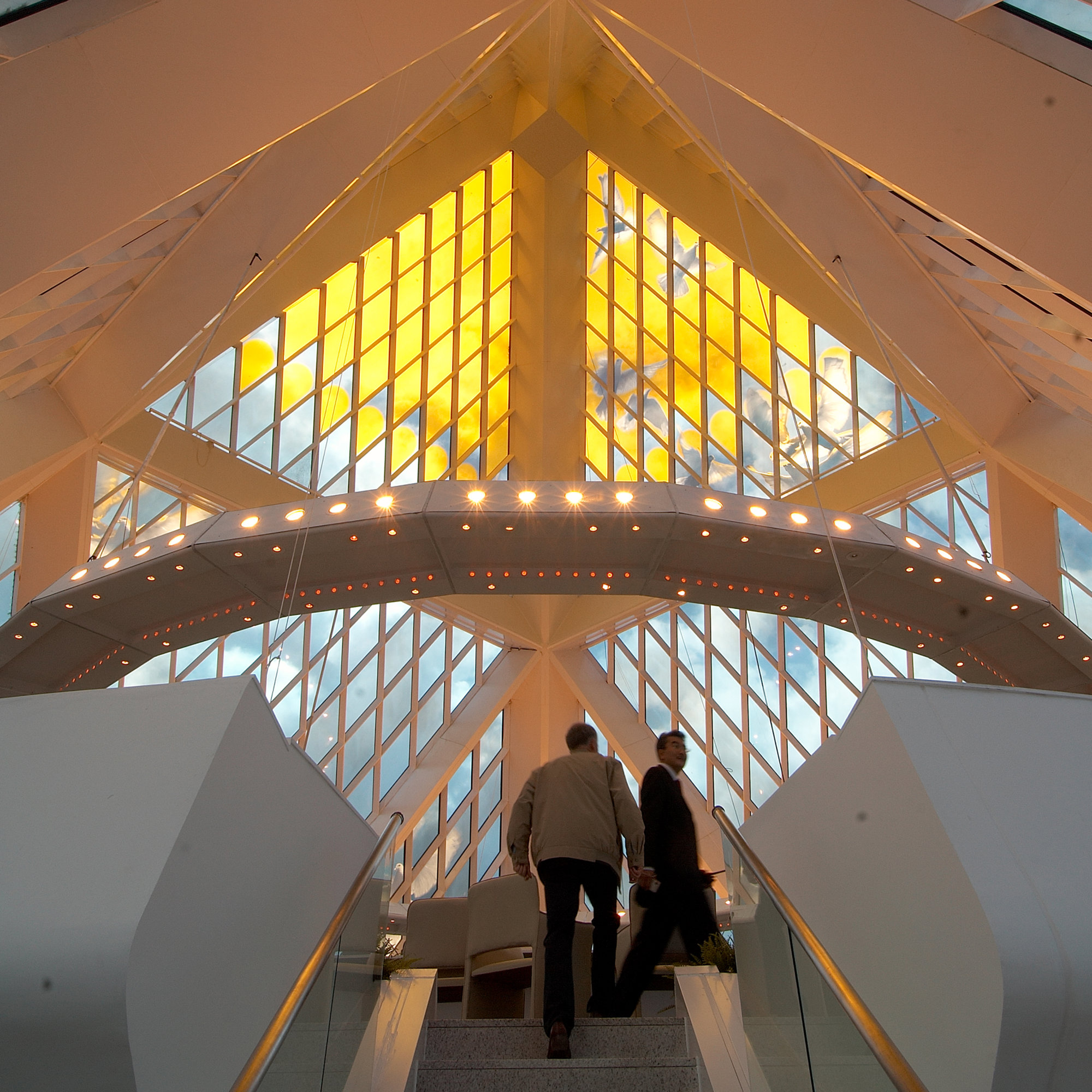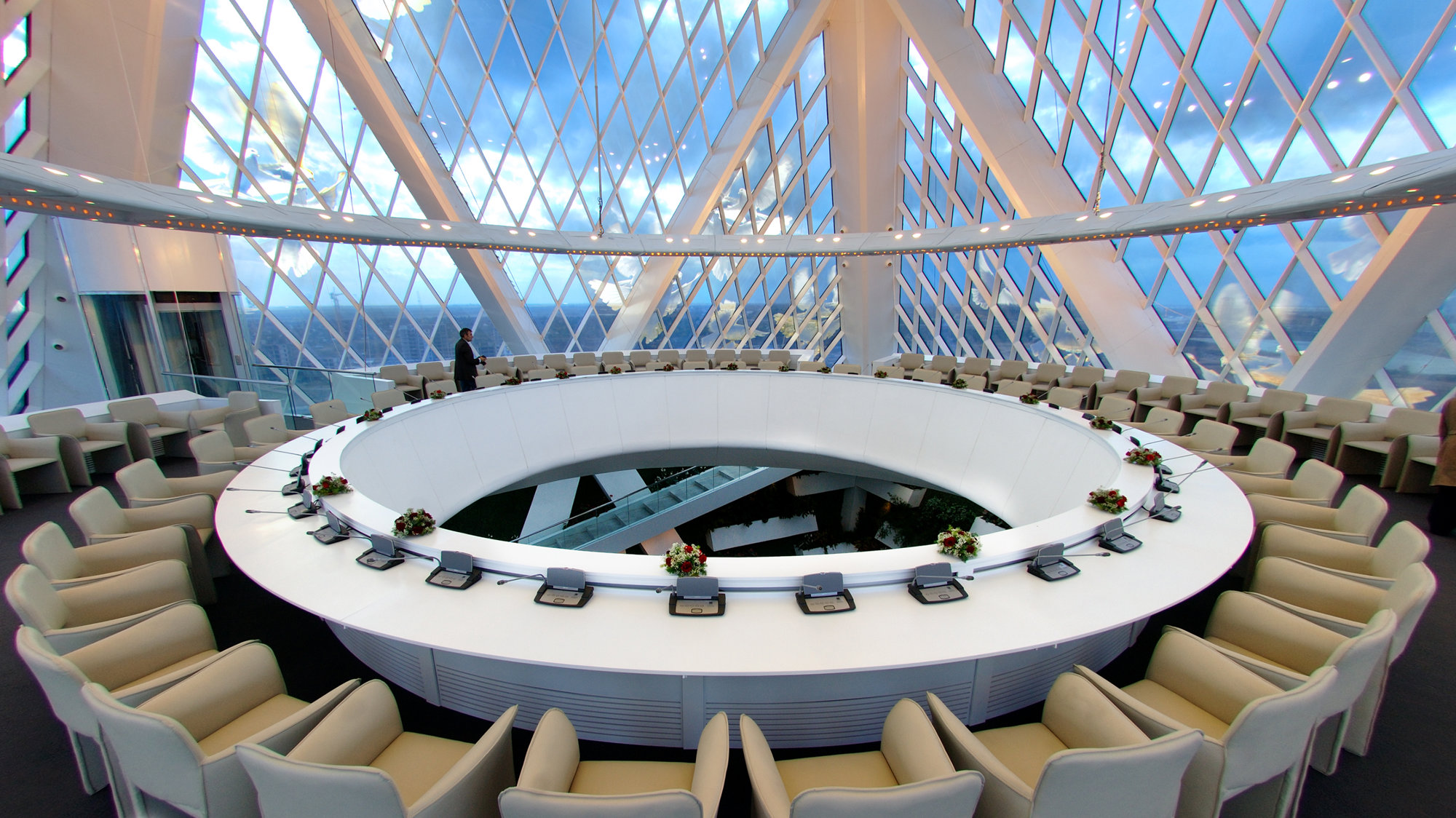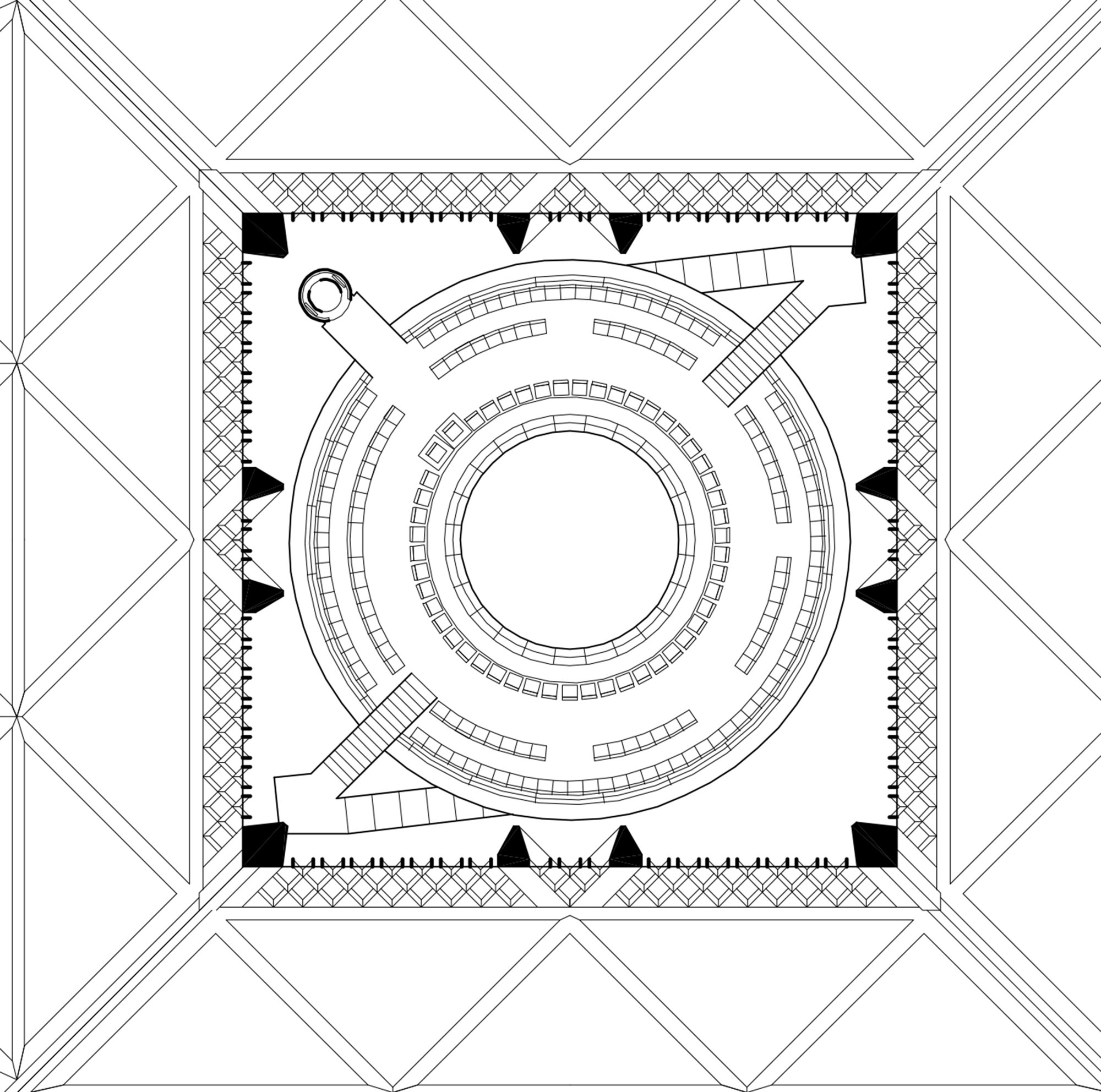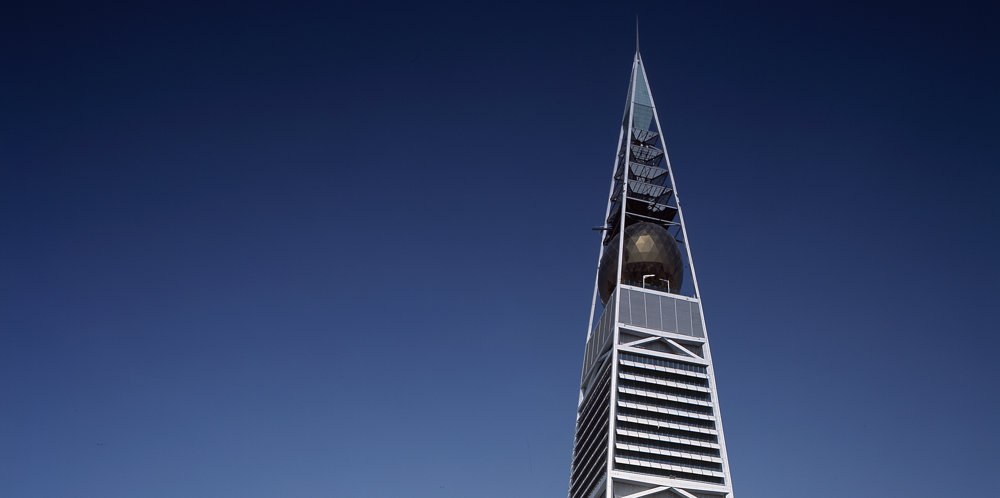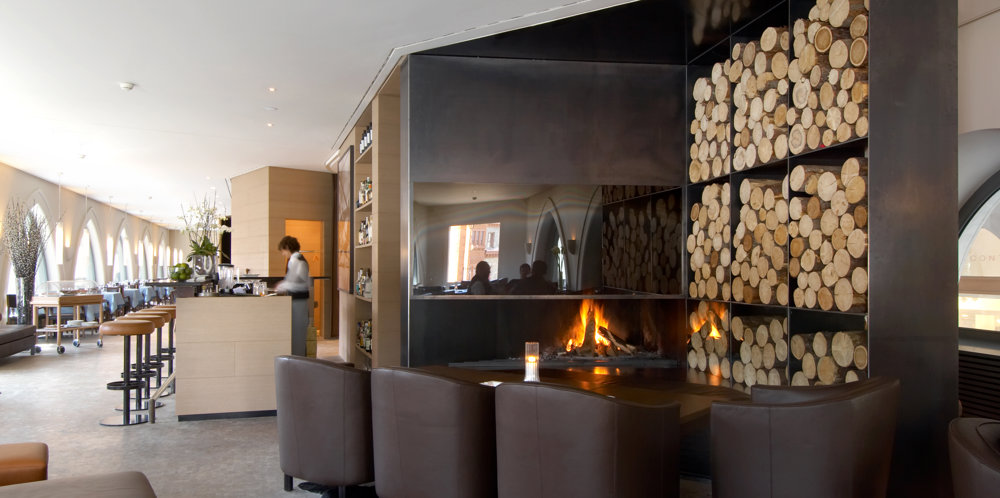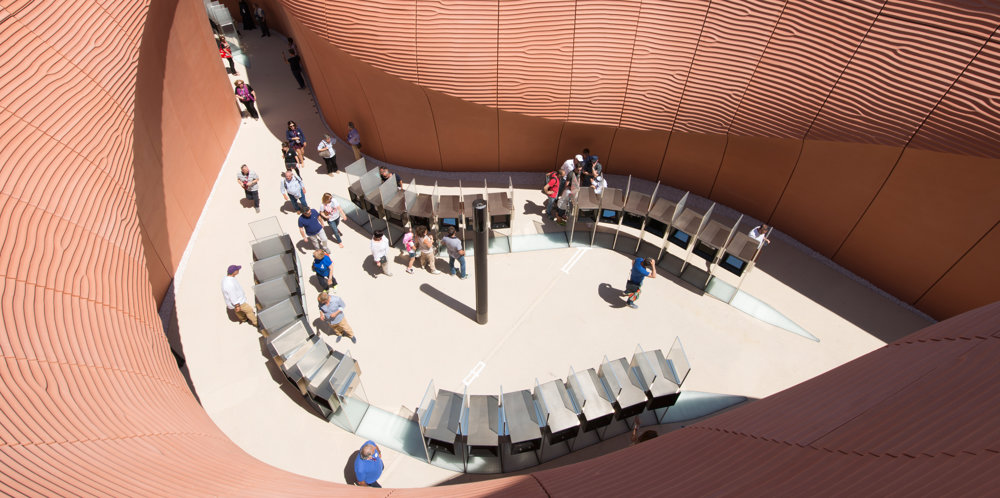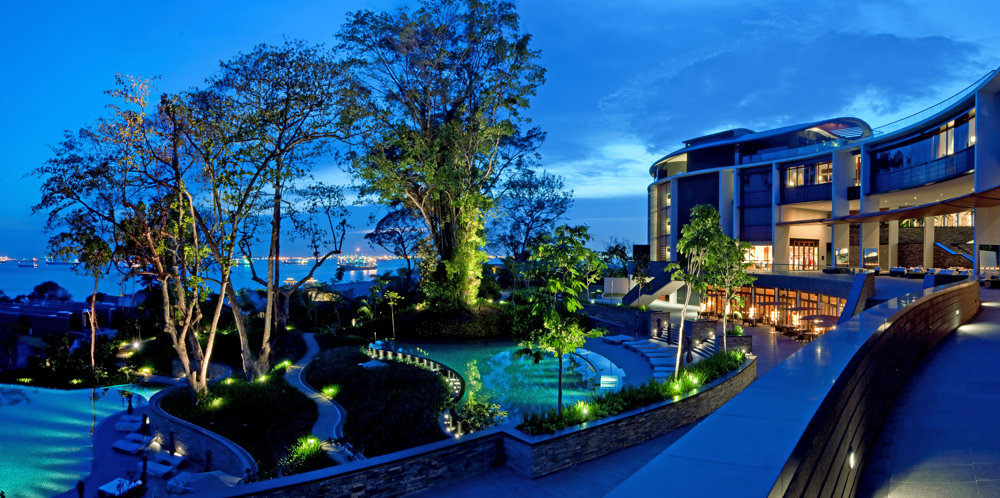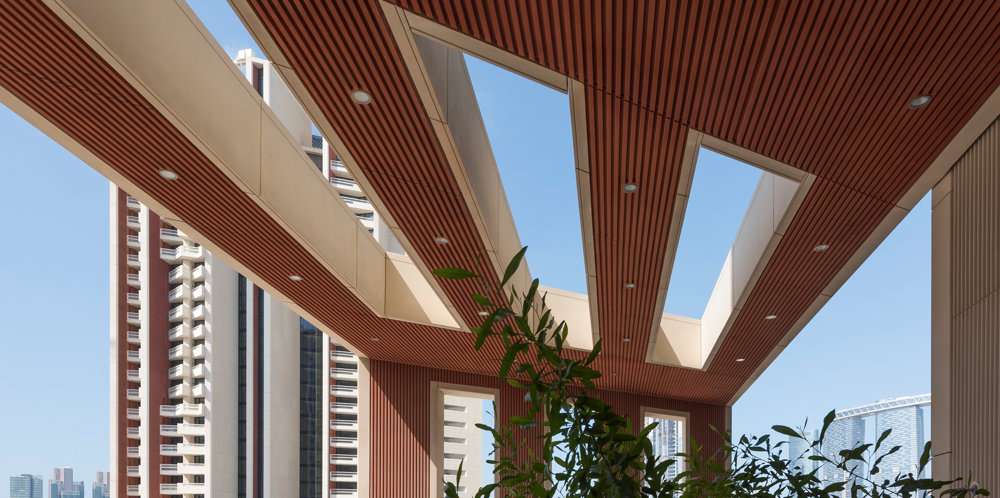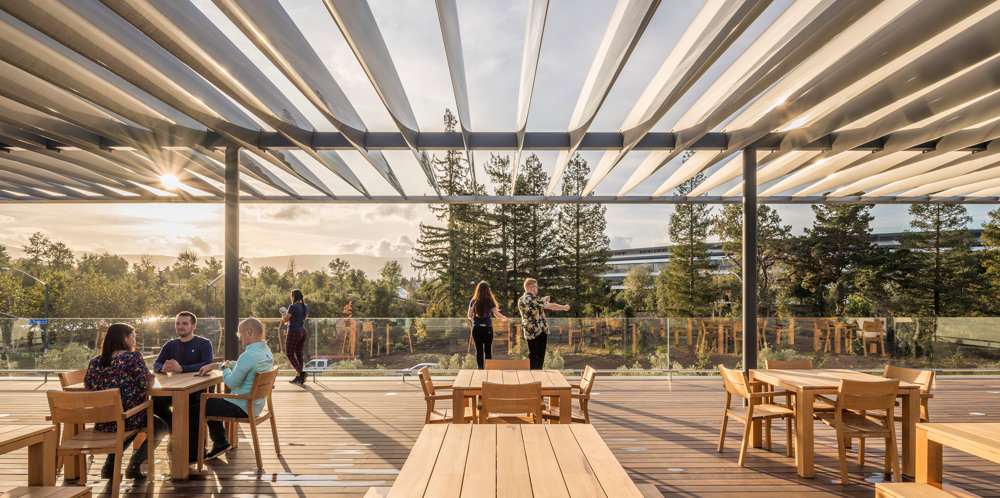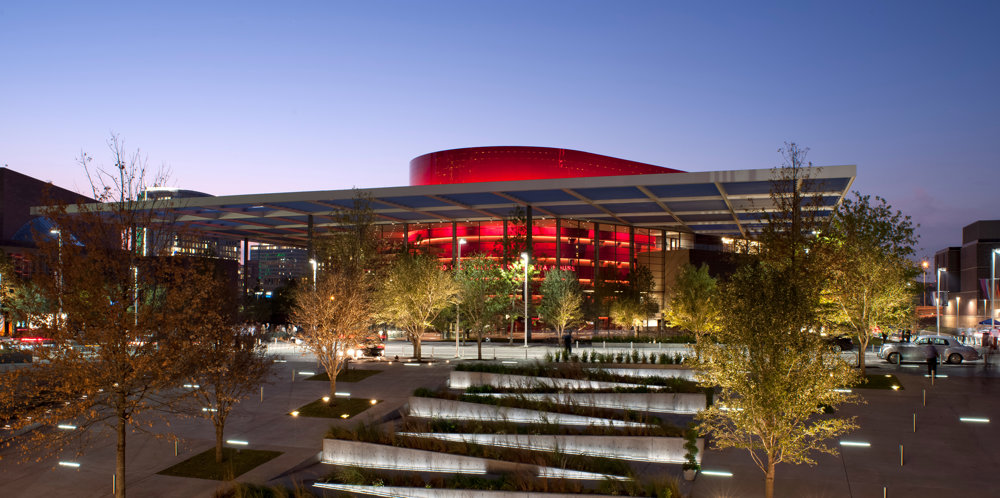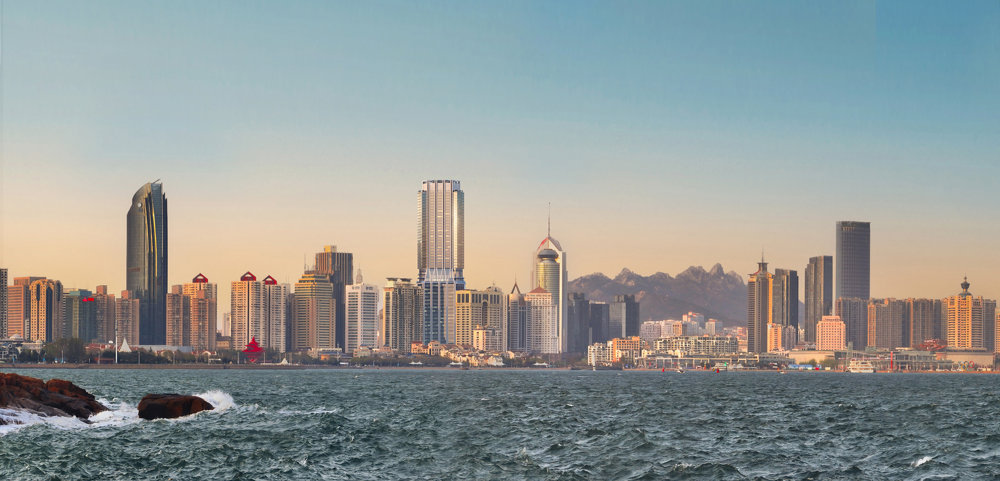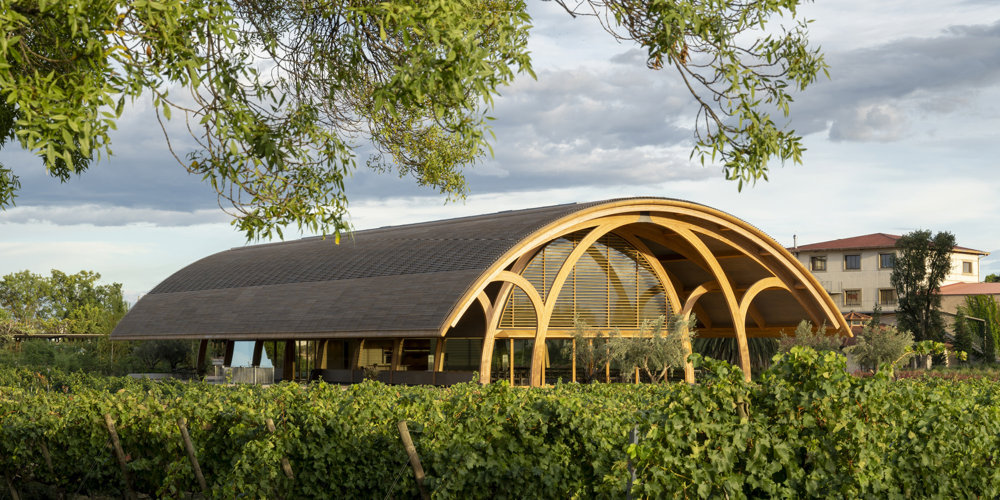In September 2003, Kazakhstan − the largest of the former Soviet Republics − hosted the inaugural Congress of Leaders of World and Traditional Religions in the capital, Astana. Spurred by the Congress’ success, the President of Kazakhstan decided to make it a triennial event. The Palace of Peace and Reconciliation was conceived as a permanent venue for the Congress and a global centre for religious understanding, the renunciation of violence and the promotion of faith and human equality.
In addition to representing the world’s religious faiths, the Palace houses a 1,500-seat opera house, educational facilities, and a national centre for Kazakhstan’s various ethnic and geographical groups. This programmatic diversity is unified within the pure form of a pyramid, 62 metres high with a 62 x 62-metre base. Clad in stone, with glazed inserts that allude to the various internal functions, the pyramid has an apex of stained glass by the artist Brian Clarke. Spatially, it is organised around a soaring central atrium, which is animated by shifting coloured light patterns. A glass lens in the floor of the atrium casts light down into the auditorium and creates a sense of vertical continuity from the lowest level of the building to the very peak. The assembly chamber is raised at the top of the building, supported on four inclined pillars − ‘the hands of peace’. Lifts take delegates to a garden-like reception space from where they ascend to the chamber via a winding ramp.
The Astanian climate posed a significant challenge, with a temperature range from 40°C in summer to -40°C in winter. The construction schedule also had to be extraordinarily rapid, the Palace needing to be complete in time for the second Congress in 2006. Together, these demands led the design team to develop a structural solution that utilises prefabricated components, which could be manufactured off site during the winter months and erected during the summer. Remarkably, the entire process, from briefing to opening was completed in just twenty-one months.









